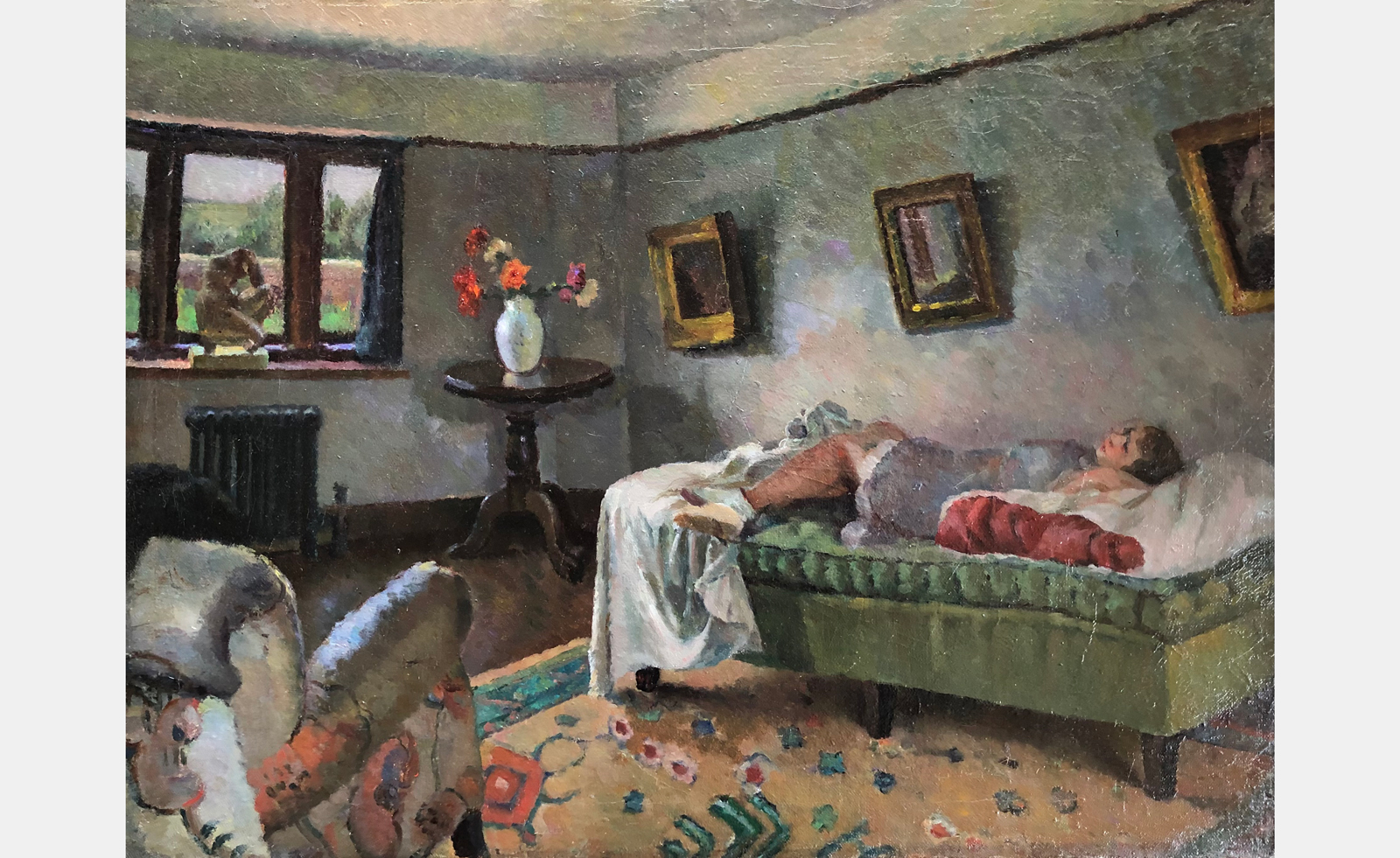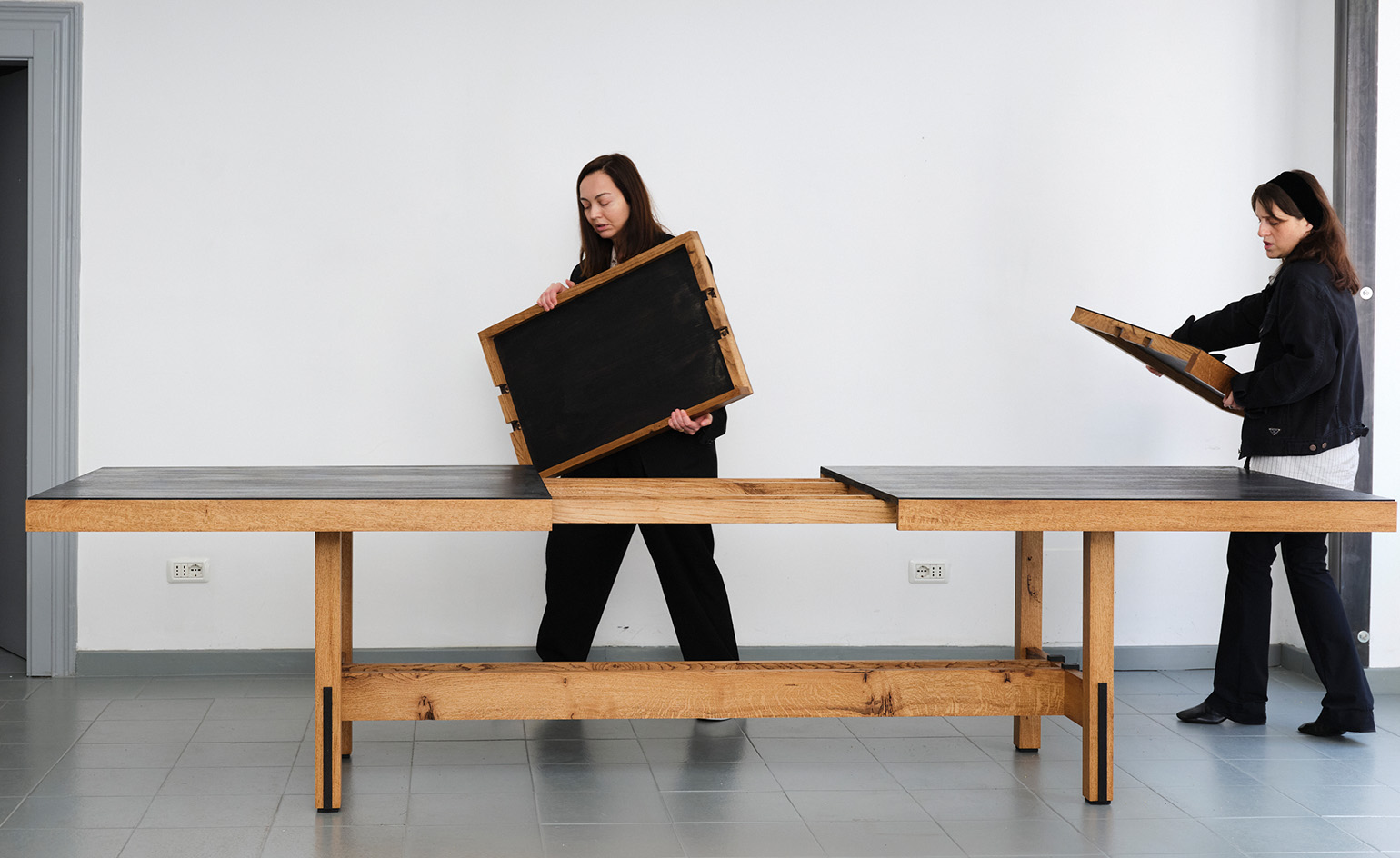Dorothy Hepworth and Patricia Preece: Bloomsbury’s untold story
‘Dorothy Hepworth and Patricia Preece: An Untold Story’ is a new exhibition at Charleston in Lewes, UK, that charts the duo's creative legacy

The story behind Dorothy Hepworth and Patricia Preece’s paintings ought to be better known than it is – something a new exhibition, ‘Dorothy Hepworth and Patricia Preece: An Untold Story’ at Charleston in Lewes (the East Sussex property’s town-centre gallery) aims to put right.
After meeting at London’s Slade School of Art in 1918 the two women – both of them artists, one magnetic and flamboyant, the other shy but a prolific artist – would go on to forge a radical queer and creative partnership that would span a rich body of work over several decades: still lifes, drawings, and portraits. As far as the public was concerned these were Preece’s works; Hepworth, however, was secretly the artist.
This was a deception that would fool the art world – including Bloomsbury Group alumni Roger Fry, Vanessa Bell and Duncan Grant (Preece was well known in Bloomsbury circles) – until 1996. Now, the new exhibition charts Hepworth and Preece’s creative legacy not only through their work but also through a rich body of archival material – and, for the first time, correctly attributes Hepworth’s own work to her.
How Dorothy Hepworth and Patricia Preece fooled the art world

Patricia Preece seated, by Dorothy Hepworth and Patricia Preece, drawing
After Slade, the women moved to Paris to study at the Académie Colarossi, painting alongside luminaries such as Henry Moore and Cedric Morris. Here, Hepworth would spend the next few years refining her style, incorporating sharp lines, sinuous forms, bold brushstrokes and vibrant colours into her works, just like her Post-Impressionist contemporaries. Her still lifes, in particular, show traces of André Lhote's early cubist influence, but this was a style Hepworth would later abandon in pursuit of her own. Bold colour is sparse in her work after this point, save for the rare splashes of verdant green and lurid blues. Instead, most of Hepworth’s paintings are grounded by an earthier, more subdued palette, perhaps mirroring the artist’s reticence to fully unleash her potential.
Although Hepworth’s body of work spanned a wide array of subjects, it was always the female form to which she returned. Preece was her ultimate muse and the subject of countless portraits and nudes, each image radiating a soft sensuality. When the women moved to Cookham, Berkshire, in 1927, Preece would also serve as inspiration to painter Stanley Spencer, whom she would later marry.

The Green Divan, by Dorothy Hepworth and Patricia Preece, oil on canvas
Through Spencer’s art, letters and photographs, the show makes no secret of the artist, his wife and her lover’s love triangle (more a square, if we are to consider that Spencer was still married to his first wife, Hilda Carline, when he first met Preece). His unrelenting obsession with Preece is evident in the exhibition’s display of Spencer’s portraits of her; Patricia at Cockmarsh Hill (1935) stands out as perhaps the most telling, as the artist superimposed a wedding ring on her finger, two years before they actually married. Preece continued living with Hepworth throughout her marriage, and the two were even buried in the same grave, with a headstone reading: ‘United in life and in death’.
Although the precise motive behind their hoax – Preece’s marriage, the missigned portraits – isn’t entirely clear, curator Emily Hill suggests that it allowed them to create something meaningful together. Just as Hepworth’s love of Preece shines through in each and every portrait, so does the gravity of her loss after Preece’s passing in 1966. Hepworth's last self-portrait, rendered in sombre, subdued hues, vividly captures her grief, as she continued to paint. Twelve years after her lover’s death, Hepworth would still sign the work as Preece.
Wallpaper* Newsletter
Receive our daily digest of inspiration, escapism and design stories from around the world direct to your inbox.
‘Dorothy Hepworth and Patricia Preece: An Untold Story’ is on view from 27 March – 8 September 2024 at Charleston in Lewes, UK

Girl with Yellow Dress, by Dorothy Hepworth and Patricia Preece, c.1929, oil on canvas
Katie Tobin is a culture writer and a PhD candidate in English at the University in Durham. She is also a former lecturer in English and Philosophy.
-
 Neko Health expands in London with a new Spitalfields site. We take a scan
Neko Health expands in London with a new Spitalfields site. We take a scanWhat’s it like to experience Neko Health’s ultra-high-tech health scanning system? Wallpaper* went under the laser lights to find out
By Jonathan Bell Published
-
 Everything you need to know about Italy's Lake Maggiore, according to Formafantasma
Everything you need to know about Italy's Lake Maggiore, according to FormafantasmaFrom baroque gardens to panoramic views, Andrea Trimarchi and Simone Farresin show us around this Italian escape
By Sofia de la Cruz Published
-
 In Milan, Rooms Studio examines Georgia’s shifting social landscape
In Milan, Rooms Studio examines Georgia’s shifting social landscapeExpandable tables that reference recent government protests and lamps held together with ‘chewing gum’ feature in the Tbilisi-based studio’s Milan Design Week 2025 installation
By Dan Howarth Published
-
 From counter-culture to Northern Soul, these photos chart an intimate history of working-class Britain
From counter-culture to Northern Soul, these photos chart an intimate history of working-class Britain‘After the End of History: British Working Class Photography 1989 – 2024’ is at Edinburgh gallery Stills
By Tianna Williams Published
-
 Surrealism as feminist resistance: artists against fascism in Leeds
Surrealism as feminist resistance: artists against fascism in Leeds‘The Traumatic Surreal’ at the Henry Moore Institute, unpacks the generational trauma left by Nazism for postwar women
By Katie Tobin Published
-
 From activism and capitalism to club culture and subculture, a new exhibition offers a snapshot of 1980s Britain
From activism and capitalism to club culture and subculture, a new exhibition offers a snapshot of 1980s BritainThe turbulence of a colourful decade, as seen through the lens of a diverse community of photographers, collectives and publications, is on show at Tate Britain until May 2025
By Anne Soward Published
-
 Jasleen Kaur wins the Turner Prize 2024
Jasleen Kaur wins the Turner Prize 2024Jasleen Kaur has won the Turner Prize 2024, recognised for her work which reflects upon everyday objects
By Hannah Silver Last updated
-
 Peggy Guggenheim: ‘My motto was “Buy a picture a day” and I lived up to it’
Peggy Guggenheim: ‘My motto was “Buy a picture a day” and I lived up to it’Five years spent at her Sussex country retreat inspired Peggy Guggenheim to reframe her future, kickstarting one of the most thrilling modern-art collections in history
By Caragh McKay Published
-
 Please do touch the art: enter R.I.P. Germain’s underground world in Liverpool
Please do touch the art: enter R.I.P. Germain’s underground world in LiverpoolR.I.P. Germain’s ‘After GOD, Dudus Comes Next!’ is an immersive installation at FACT Liverpool
By Will Jennings Published
-
 ‘Regeneration and repair is a really important part of how I work’: Bharti Kher at Yorkshire Sculpture Park
‘Regeneration and repair is a really important part of how I work’: Bharti Kher at Yorkshire Sculpture ParkBharti Kher unveils the largest UK museum exhibition of her career at Yorkshire Sculpture Park
By Will Jennings Published
-
 ‘Mental health, motherhood and class’: Hannah Perry’s dynamic installation at Baltic
‘Mental health, motherhood and class’: Hannah Perry’s dynamic installation at BalticHannah Perry's exhibition ’Manual Labour’ is on show at Baltic in Gateshead, UK, a five-part installation drawing parallels between motherhood and factory work
By Emily Steer Published